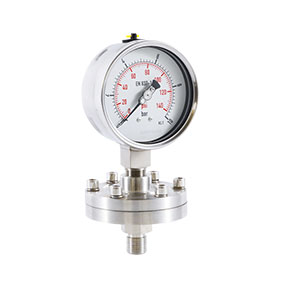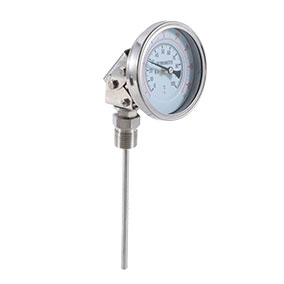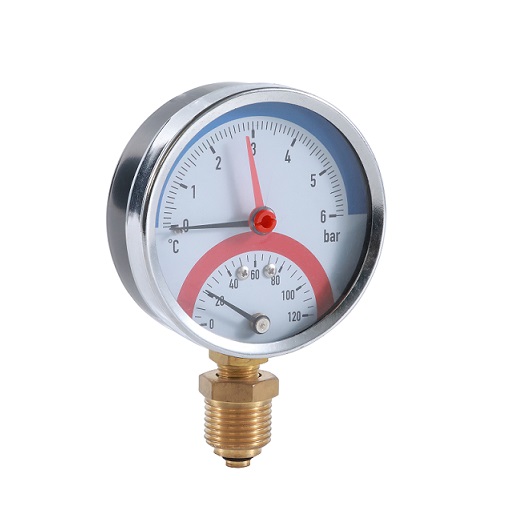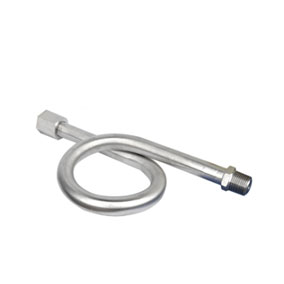Different Applications of Diaphragm Pressure Gauges in Industry
Diaphragm pressure gauges are widely used in many industrial fields due to their high precision and reliability. It senses pressure changes through the deformation of the diaphragm, and is suitable for accurate measurement in low-pressure environments. With the complexity and automation of industrial equipment, the application of diaphragm low-pressure pressure gauges has expanded to many fields such as gas transportation, HVAC systems, and water treatment, becoming a key tool to ensure the safe operation of equipment. This article will explore in depth the application and importance of diaphragm low-pressure pressure gauges in different industrial fields.
Gas Transportation and Monitoring System
In gas transportation systems, diaphragm low-pressure pressure gauges are widely used for pressure monitoring of gases such as natural gas, air, and nitrogen. Since the pressure of gas is usually low, traditional pressure gauges may not be able to accurately measure these small changes, while diaphragm pressure gauges can provide accurate low-pressure measurements. The pressure of gas pipelines needs to be precisely controlled to ensure safe and efficient transportation, which makes diaphragm low-pressure pressure gauges irreplaceable in gas regulation systems.
HVAC systems (heating, ventilation and air conditioning systems)
In HVAC systems, diaphragm low-pressure pressure gauges are mainly used to monitor and control low-pressure areas in air conditioning systems and HVAC equipment. For example, in air conditioning refrigerant circuits, diaphragm low-pressure pressure gauges are used to measure the pressure of low-pressure gases in the system. These pressure gauges can help engineers understand the operating status of the system in real time and avoid system failures or energy waste due to improper pressure.
Water treatment and liquid delivery systems
In water treatment plants and liquid delivery systems, diaphragm low-pressure pressure gauges are used to monitor low-pressure parts in pump stations, pipelines and filtration systems. For example, measuring the pressure difference between the inlet and outlet of the filter can ensure that the pressure of the liquid flow is always within a safe range. This is crucial to improve processing efficiency and prevent equipment failures.
Laboratories and precision equipment
In scientific research laboratories and precision instruments, diaphragm low-pressure pressure gauges are often used to monitor the pressure of low-pressure gases or liquids. In gas analysis instruments or vacuum systems, diaphragm pressure gauges can accurately reflect pressure changes and ensure the accuracy of experimental results. For example, in gas experiments, diaphragm low-pressure pressure gauges can help experimenters accurately control the flow and pressure of gas to meet the precision requirements of the experiment.
Oil and gas industry
During oil extraction and natural gas processing, diaphragm low-pressure pressure gauges are often used to detect the pressure in low-pressure areas, such as pipelines, storage tanks, and gas separation devices. Since these operations usually involve lower pressure environments, diaphragm low-pressure pressure gauges can provide more stable and accurate pressure data to help maintain system safety and operating efficiency.
Home and commercial equipment
In some home appliances such as gas stoves, water heaters, etc. and commercial equipment, diaphragm low-pressure pressure gauges also play an important role. It can help monitor the working status of the equipment and ensure that the pressure does not exceed the specified range, thereby improving the safety and service life of the equipment.
Diaphragm low-pressure pressure gauges play a vital role in many industrial fields. Whether in gas transmission, HVAC systems, water treatment, or in precision laboratories and the oil and gas industry, they ensure the normal operation and safety of equipment with their high accuracy and stability. As industrial needs continue to develop, diaphragm-type low-pressure pressure gauges will continue to be an important tool for measuring and controlling low pressure, providing reliable protection for various industrial systems.




